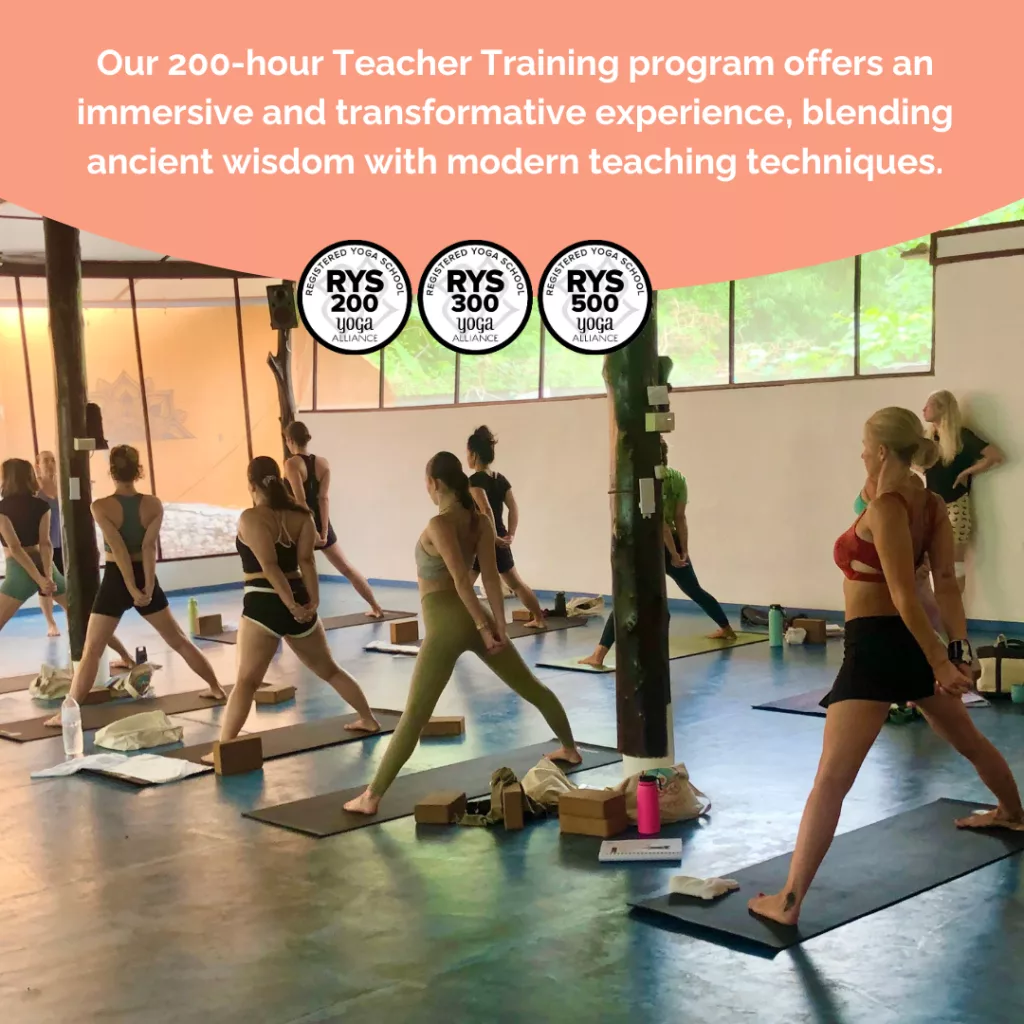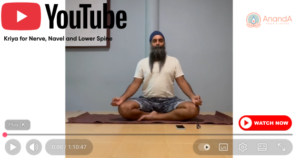Understanding Yoga Teacher Training
Yoga teacher training (YTT) is an intensive educational journey designed to deepen your understanding of yoga’s philosophy, practice, and teaching methodology. It equips aspiring instructors with the necessary tools and knowledge to guide others on their yoga journeys. Whether you aim to teach professionally or enrich your practice, YTT provides a structured environment to explore the multifaceted dimensions of yoga.
The curriculum of a typical YTT program encompasses various aspects of yoga, including asanas (postures), pranayama (breath control), meditation, anatomy, and teaching techniques. These programs often blend traditional teachings with modern practices, ensuring a well-rounded education. By immersing yourself in this comprehensive training, you will learn to embody and convey the principles of yoga both on and off the mat.
Choosing to embark on a YTT journey means committing to self-discovery and personal growth. It demands dedication, discipline, and a willingness to leave your comfort zone. However, the rewards are profound, leading to a deeper connection with yourself and the ability to inspire and uplift others through yoga.
Benefits of Becoming a Certified Yoga Instructor
Becoming a certified yoga instructor offers numerous benefits, both personally and professionally. One of the most significant advantages is sharing your passion for yoga with others, helping them find balance, strength, and serenity. Teaching yoga allows you to positively impact your students’ well-being, fostering a sense of fulfillment and purpose.
Professionally, a certification in yoga instruction can open doors to various career opportunities. The wellness industry is booming, and there is a growing demand for qualified yoga teachers in studios, gyms, wellness centers, and corporate settings. Additionally, many certified instructors offer private lessons, workshops, or retreats, providing flexibility and the potential for a dynamic career.
On a personal level, becoming a yoga teacher can be transformative. It encourages self-reflection, mindfulness, and a deeper understanding of your body and mind. The skills and knowledge gained during YTT can enhance your practice, improving physical health, mental clarity, and emotional resilience. Moreover, the sense of community and connection with fellow trainees can be a source of lifelong friendships and support.
Types of Yoga Teacher Training Programs
Yoga teacher training programs come in various formats, catering to different needs, schedules, and learning preferences. The most common types are the 200-hour and 300-hour programs, each offering a distinct level of depth and intensity. Additionally, specialized trainings focus on specific styles or populations, such as Vinyasa, Hatha, Ashtanga, Yin, prenatal yoga, or yoga for children.
The 200-hour program is typically considered the foundational training for aspiring yoga teachers. It covers the essential elements of yoga practice and teaching, providing a solid base to build your skills. This program usually spans a few weeks to several months, allowing for both full-time immersion and part-time study options, making it accessible to those with varying schedules.
For those seeking a more advanced or comprehensive education, the 300-hour program delves deeper into the nuances of yoga. This training often includes more extensive study of anatomy, philosophy, and advanced teaching techniques. It may also involve mentorship and hands-on teaching experience, preparing graduates for more specialized or leadership roles within the yoga community. Beyond these are continuous education programs and workshops for certified instructors looking to refine their skills or explore new areas of interest.
Key Considerations When Choosing a Training Program
Selecting the right yoga teacher training program is crucial in your journey. With numerous options available, it is essential to consider factors such as the school’s reputation, the instructors’ experience and qualifications, the curriculum, and the program’s alignment with your personal and professional goals. Thorough research and reflection help ensure you make an informed decision that best supports your aspirations.
Reputation and accreditation are significant indicators of a quality YTT program. Look for schools registered with reputable organizations, such as the Yoga Alliance. These organizations set standards for training programs, ensuring they meet specific curriculum, faculty, and ethics criteria.
Reading reviews and testimonials from former students can also provide valuable insights into the program’s strengths and weaknesses.
The instructors’ experience and teaching style are equally important. A program led by seasoned and knowledgeable teachers can significantly enhance your learning experience. Take the time to learn about the instructors’ backgrounds, approaches to teaching, and areas of expertise. Additionally, consider the format and location of the training. Some programs are residential, offering an immersive experience, while others are non-residential, providing flexibility for those with other commitments.
The Structure of a Typical Yoga Teacher Training Course
A typical yoga teacher training course is structured to provide a comprehensive education in yoga’s practical and theoretical aspects. The curriculum is designed to cover various topics, including asana practice, anatomy, philosophy, teaching methodology, and ethics. This holistic approach ensures trainees develop a well-rounded understanding of yoga and the skills necessary to teach effectively.
Daily asana practice is a core component of yoga teacher training, allowing trainees to deepen their physical practice and understand the alignment and benefits of different postures. Pranayama and meditation practices often complement these sessions, which help cultivate mindfulness and breath awareness. Anatomy classes provide insights into the body’s structure and function, emphasizing injury prevention and safe practice.
Lectures and discussions on yoga philosophy, history, and ethics are integral to the training, offering a deeper understanding of the traditions and principles that underpin the practice. Teaching methodology sessions focus on developing the skills needed to lead a class, including sequencing, cueing, adjustments, and creating a supportive and inclusive environment. Practical teaching experience, often through peer teaching and supervised classes, allows trainees to apply what they have learned and gain confidence in their teaching abilities.
Essential Skills and Qualities for a Successful Yoga Teacher

Yoga Teacher Training 2025
Becoming a successful yoga teacher requires more than technical proficiency in asanas. It involves cultivating various skills and qualities that enable you to connect with and inspire your students. Key attributes include empathy, patience, effective communication, adaptability, commitment to continuous learning, and personal growth.
Empathy and patience are fundamental in understanding and supporting your students’ needs and challenges. A compassionate approach creates a safe and welcoming space where students feel valued and encouraged. Effective communication is also crucial, enabling you to convey instructions, offer helpful feedback, and create an engaging and motivating class environment.
Adaptability is essential in accommodating your students’ diverse abilities, preferences, and goals. Modifying postures, sequences, and teaching styles to suit different levels and needs ensures that everyone can benefit from your classes. A commitment to continuous learning and personal growth keeps your teaching fresh and relevant. Staying curious and open to new ideas, techniques, and perspectives helps you evolve as a practitioner and instructor.
Preparing for Your Yoga Teacher Training Journey
Preparing for your yoga teacher training journey involves more than just physical readiness. It requires mental and emotional preparation to embrace the transformative experience fully. Setting clear intentions, establishing a consistent practice, and cultivating a supportive mindset are essential to preparing for this significant commitment.
Setting clear intentions helps you stay focused and motivated throughout your training. Reflect on your reasons for pursuing YTT, whether to deepen your practice, teach professionally, or explore yoga’s philosophical aspects. Writing down your goals and revisiting them regularly can provide clarity and direction as you progress through the program.
Consistent practice is crucial in building the physical strength, flexibility, and endurance needed for intensive training. Regular practice also helps you develop discipline and familiarity with different postures and techniques. In addition to asana practice, incorporate pranayama and meditation into your routine to enhance your overall well-being and mindfulness.
Cultivating a supportive mindset involves being open to learning, embracing challenges, and being kind to yourself. Yoga teacher training can be intense and demanding, both physically and emotionally. Approach the journey with a sense of curiosity and willingness to grow. Surround yourself with a supportive community of fellow practitioners, friends, and family who can offer encouragement and understanding as you navigate this transformative experience.
The Role of Yoga Philosophy in Teacher Training
Yoga philosophy is a cornerstone of teacher training, providing the ethical and spiritual framework that guides the practice. Understanding the philosophical underpinnings of yoga enriches your teaching and helps you impart its deeper values to your students. Key texts and concepts, such as the Yoga Sutras of Patanjali, the Bhagavad Gita, and the principles of the Yamas and Niyamas, offer profound insights into the path of yoga.
The Yoga Sutras of Patanjali, a foundational text in the study of yoga, outlines the eight limbs of yoga, which provide a comprehensive guide to living a meaningful and purposeful life. These limbs include ethical guidelines (Yamas and Niyamas), physical postures (Asanas), breath control (Pranayama), sense withdrawal (Pratyahara), concentration (Dharana), meditation (Dhyana), and ultimate liberation (Samadhi). Understanding and incorporating these principles into your practice and teaching can help you create a holistic and balanced approach to yoga.
The Bhagavad Gita, another essential text, explores the concepts of duty, devotion, and selfless action. It emphasizes the importance of aligning one’s actions with a higher purpose and cultivating a sense of detachment from the outcomes. These teachings can inspire you to approach your role as a yoga teacher with humility, dedication, and a focus on serving your students.
Career Opportunities After Certification
Upon completing your yoga teacher training and obtaining certification, many career opportunities await you. The demand for qualified yoga instructors continues to grow as more people recognize the benefits of yoga for physical, mental, and emotional well-being. Whether you work in a studio, wellness center, or corporate setting or pursue independent ventures, your certification opens the door to diverse and rewarding career paths.
Teaching at a yoga studio is a common starting point for many new instructors. Studios offer a supportive environment to gain experience, build a student base, and connect with the yoga community. Many studios also provide opportunities for continuing education, mentorship, and specialization in different yoga styles. Working in a studio allows you to collaborate with other instructors and learn from their experiences.
Corporate yoga is another growing field, as businesses increasingly recognize the benefits of yoga for employee health and productivity. Offering yoga classes in the workplace can help reduce stress, improve focus, and foster a positive work environment. As a corporate yoga instructor, you can design programs tailored to the needs of busy professionals and contribute to overall workplace wellness.
Independent ventures, such as private lessons, workshops, retreats, or online classes, provide flexibility and the potential for a dynamic career. Private lessons allow you to offer personalized instruction and build strong relationships with your clients. Workshops and retreats provide opportunities to delve deeper into specific aspects of yoga and create immersive experiences for your students. Online teaching platforms enable you to reach a global audience and offer classes from the comfort of your own home.
Conclusion: Taking the Leap into Yoga Teaching
Embarking to become a certified yoga instructor is a profound and rewarding endeavor. It requires dedication, passion, and a commitment to personal growth. By choosing the right training program, developing essential skills, and embracing the philosophical teachings of yoga, you can transform your passion into a meaningful profession that positively impacts the lives of others.
As you leap yoga teaching, remember that the journey is as important as the destination. Embrace the challenges and opportunities for growth that come your way. Stay curious, open, and committed to continuous learning. Surround yourself with a supportive community and seek opportunities to share knowledge and inspire others.
In 2025, the wellness industry is thriving, and there has never been a better time to pursue a career in yoga teaching. By following this comprehensive guide, you are well-equipped to navigate the myriad options available and embark on a transformative journey that aligns with your passion and purpose. Unleash your inner teacher and enter a world of connection, growth, and fulfillment. Your journey to becoming a certified yoga instructor begins now.
Join Us for a Transformational 200-hour Yoga Teacher Training
If you’re ready to deepen your practice and step into the role of a yoga teacher, our 200-hour Yoga Teacher Training is the perfect opportunity.
✅ Build a Strong Foundation – Learn asana, alignment, anatomy, philosophy, and teaching techniques.
✅ Develop Confidence – Gain hands-on experience leading classes and refining your practice.
✅ Embrace Yoga’s Deeper Teachings – Explore the philosophy and mindfulness practices that make yoga a lifestyle.
✅ Join a Supportive Community – Connect with like-minded individuals on a shared path of growth and transformation.
Taught by experienced instructors in a serene beachfront setting, this program is Yoga Alliance certified, ensuring you receive the highest quality education.
Are you ready to leap? 🌿 Secure here your spot today and begin your journey into the heart of yoga!





